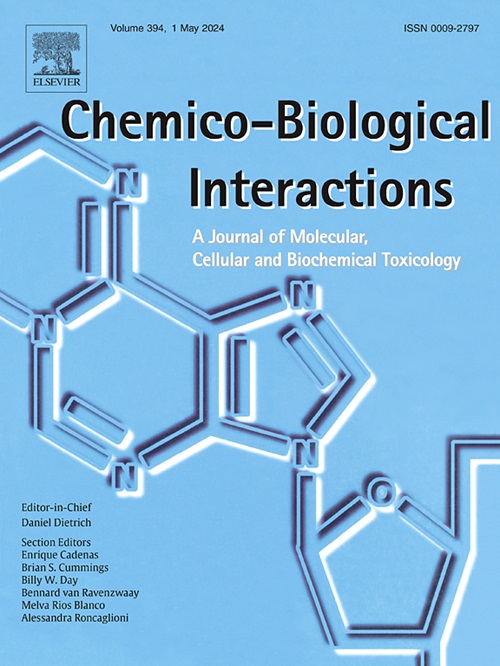Alkaloids and nitrosamines in betel quid: A biochemical exploration of carcinogenicity
IF 4.7
2区 医学
Q1 BIOCHEMISTRY & MOLECULAR BIOLOGY
引用次数: 0
Abstract
Betel quid contains two major ingredients; Areca catechu and Piper betel, often consumed with slaked lime, tobacco, certain flavouring agents, colouring agents, herbs, and spices according to personal preferences. The areca nut alkaloids (arecoline, arecaidine, guvacine, and guvacoline), and tobacco alkaloids (nicotine, nornicotine) undergo nitrosation during chewing in the oral cavity with the presence of nitrite and thiocyanate and endogenously. Among the nitrosation products generated areca nut-derived nitrosamine (ADNA): 3-(methylnitrosamino) Propionitrile (MNPN) and the two tobacco-specific nitrosamines (TSNAs); N′-nitrosonornicotine (NNN) and 4-(methylnitrosamino)-1-(3-pyridyl)-1-butanone) (NNK) are considered Group 1 human carcinogens. The slaked lime increases pH, reactive oxygen species (ROS) generation, and inflammation further lead to oral potentially malignant disorders (OPMD). The juice swallowed results in carcinogenicity, mutagenicity, and toxicity in the gastrointestinal tract including hepatocytic carcinoma, stomach, and colon cancer. Areca nut pre-treatments (sun drying, roasting, boiling, and fermentation) increase the quid metabolism, and reduce the arecoline content and associated risks. We review biochemical carcinogenesis of betel quid ingredients and synergic adverse effects and possible mechanism of carcinogenesis of betel quid in the oral cavity and gastrointestinal tract to understand the implication of polyphenols and alkaloids of areca nut and betel quid on carcinogenic nitrosamine formation under oral, gastric, and intestinal conditions.

槟榔液中的生物碱和亚硝胺:致癌性的生化探索。
槟榔液含有两种主要成分;槟榔儿茶和槟榔,根据个人喜好,经常与生石灰、烟草、某些调味剂、着色剂、草药和香料一起食用。槟榔果生物碱(槟榔碱、槟榔碱、guvacine和guvacoline)和烟草生物碱(尼古丁、非尼古丁)在口腔咀嚼过程中随着亚硝酸盐和硫氰酸盐的存在和内源性发生亚硝化。槟榔衍生亚硝胺(ADNA)的亚硝化产物有:3-(甲基亚硝胺)丙腈(MNPN)和两种烟草特异性亚硝胺(TSNAs);N′-亚硝基烟碱(NNN)和4-(甲基亚硝胺)-1-(3-吡啶基)-1-丁酮(NNK)被认为是1类人类致癌物。熟石灰增加了pH值,活性氧(ROS)的产生,炎症进一步导致口腔潜在恶性疾病(OPMD)。吞下的果汁在胃肠道中具有致癌性、诱变性和毒性,包括肝癌、胃癌和结肠癌。槟榔果的预处理(晒干、烘烤、煮沸和发酵)增加了液体代谢,降低了槟榔碱含量和相关风险。本文综述槟榔液各成分的生化致癌作用,以及槟榔液在口腔和胃肠道中的协同副反应和可能的致癌机制,以了解槟榔多酚和生物碱在口腔、胃和肠道条件下对致癌性亚硝胺形成的影响。
本文章由计算机程序翻译,如有差异,请以英文原文为准。
求助全文
约1分钟内获得全文
求助全文
来源期刊
CiteScore
7.70
自引率
3.90%
发文量
410
审稿时长
36 days
期刊介绍:
Chemico-Biological Interactions publishes research reports and review articles that examine the molecular, cellular, and/or biochemical basis of toxicologically relevant outcomes. Special emphasis is placed on toxicological mechanisms associated with interactions between chemicals and biological systems. Outcomes may include all traditional endpoints caused by synthetic or naturally occurring chemicals, both in vivo and in vitro. Endpoints of interest include, but are not limited to carcinogenesis, mutagenesis, respiratory toxicology, neurotoxicology, reproductive and developmental toxicology, and immunotoxicology.

 求助内容:
求助内容: 应助结果提醒方式:
应助结果提醒方式:


